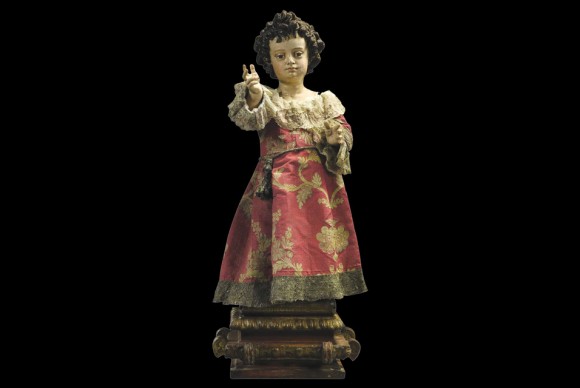17th-Century Spanish Sculpture, by Juan Martínez Montañés, Acquired by the Toledo Museum of Art
TOLEDO, OH.- The Toledo Museum of Art has added a major sculpture, The Infant Christ by foremost Spanish 17th-century sculptor Juan Martínez Montañés (1568–1649), to its collection. “The acquisition marks the first Spanish sculpture and the first polychromed wood sculpture from that period to enter the TMA collection,” said Museum Director Brian Kennedy.
Montañés, who lived and worked in Seville his entire career, was esteemed in his day as “El Dios de la Madera,” the god of wood. He had an impressive talent for modeling human anatomy; the hallmark of his style is startling realism.
“The Infant Christ is a commanding example of Montañés’s artistry,” said Lawrence Nichols, William Hutton curator, European and American painting and sculpture before 1900. “The foremost reason the Toledo Museum of Art acquired this object is the inherent quality of the sculpture. Its carving is adept and subtle. The polychromy is skillfully carried out and convincingly harmonizes with the carving. The naturalism of the piece is palpable,” he said.
Along with Spanish painters of the Counter-Reformation period, the sculptures of Montañés played a major role in encouraging piety and devotion to the Church. A subject that became popular in the late 16th and especially in the 17th century was the child Jesus, standing alone. Many were in convents since the infant forms appealed to the tender feelings of the nuns, who might keep these statuettes, dressed in laces and embroideries, in their cells.
Throughout Montañés’s career he received numerous commissions from Seville Cathedral as well as convents and monasteries in that city and elsewhere.
Montañés’s many sculptures of the infant were functional objects. They were dressed and undressed with regularity over the centuries, and at least annually processed through the streets in the “pasos” or devotional procession during the celebration of the Feast of Corpus Christi. The gaze of The Infant Christ, forward looking but downward, connotes a premonition of the fate awaiting the adult Christ. His raised proper right hand beckons in a gesture of blessing, whereas his lowered proper left one may originally have held a crucifix.
At 33 ½ inches high, the sculpture has strong resonance with the Museum’s Spanish 17th-century paintings, including St. Joseph and the Christ Child and Murillo’s The Adoration of the Magi, all on view in the Great Gallery.
Related posts:
- Art Institute of Chicago Announces Major Acquisition of an Early 17th Century Painting
- 17th Century Automata Lion Clock Roars in £117,600 at Bonhams
- Toledo Museum of Art Launches Redesigned Website
- The Toledo Museum of Art Receives $2 Million Lead Gift to Renovate Its Former Glass Gallery
- Rediscovered Painting by Dutch Artist Rembrandt on Loan at the Toledo Museum of Art

